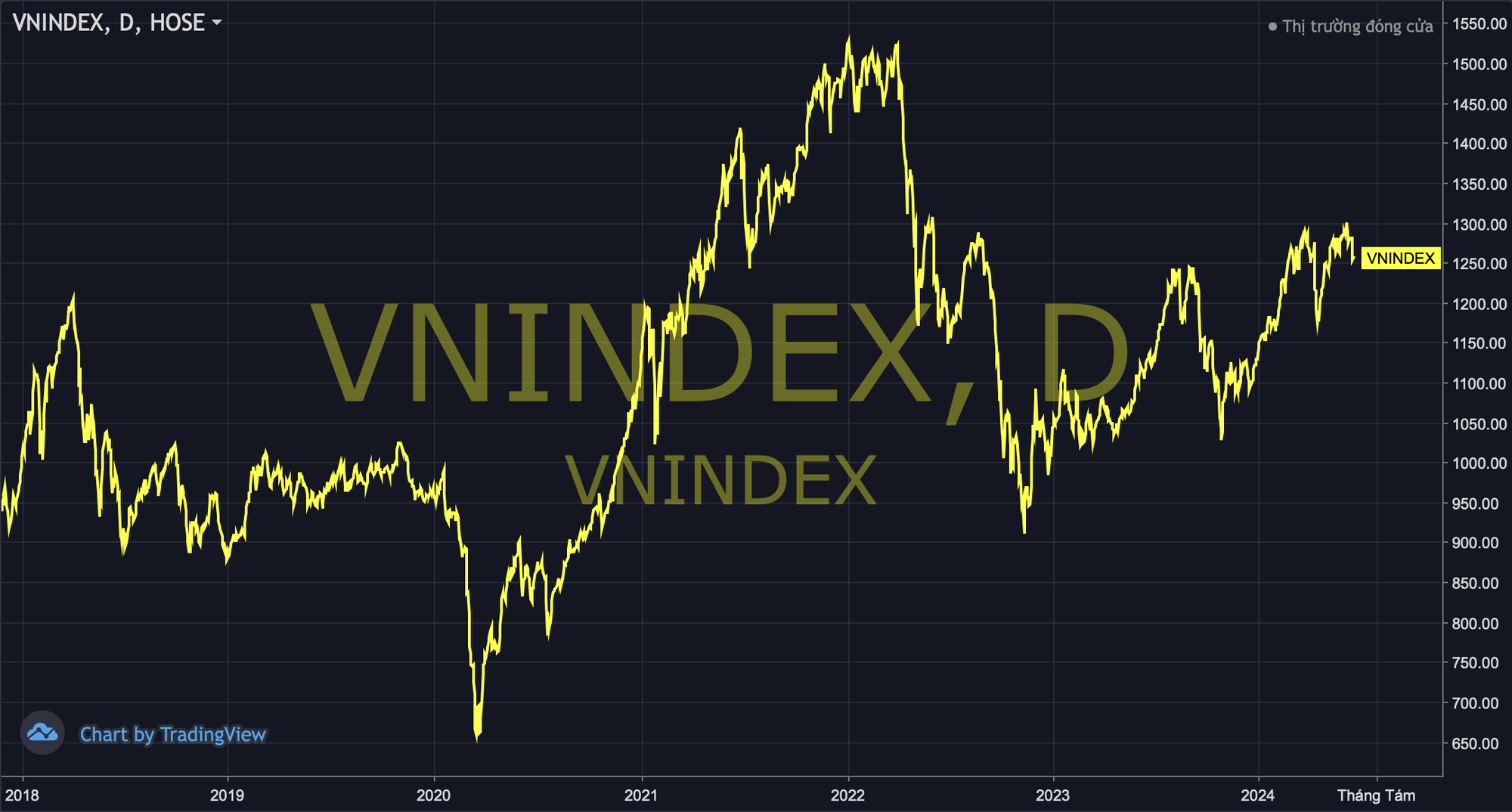
While the VN-Index is still struggling around 1,300 points, many stocks have broken out strongly, setting new peaks, the highest ever.
Recently, the number 1,300 points has been mentioned a lot by investors and stock experts as a certain target to be achieved. Less than 2 weeks ago, VN-Index reached this milestone for the first time after 2 years of ups and downs. However, the joy was short-lived, the index turned around and fell rapidly and fell to the 1,250 point area, to the disappointment of many stock traders.

In fact, apart from the “round number”, the 1,300 point mark does not have much meaning. Because, while VN-Index is still struggling to reach this threshold, many stocks have broken out strongly, setting new peaks, the highest ever. Investors can freely choose to have positive investment performance instead of just “focusing” on VN-Index.
Typically, large-weight stocks in the VNDiamond basket such as FPT, PNJ, GMD, REE, ACB, TCB are all nearing their historical peaks with increases of tens of % since the beginning of the year, completely outperforming the VN-Index. The high performance of these "diamonds" has helped the VNDiamond index also reach its peak, higher than the period when the VN-Index was 1,500 points in April 2022.
VNDiamond is an index announced by the Ho Chi Minh Stock Exchange (HoSE) on November 18, 2019. The biggest difference between VN Diamond and other indices is the FOL (Foreign Ownership Limit) coefficient - the limit on the holding ratio of foreign investors. Stocks with a FOL coefficient of at least 95% are likely to be considered for inclusion in the VNDiamond basket.

In addition to the VNDiamond basket, there are still many single listed stocks such as HVN, FRT, CTR, VTP, HAH, IDC, etc. that have increased sharply since the beginning of the year and are nearing their historical peak. Not only listed stocks, the UPCoM exchange also has many outstanding representatives that have increased sharply in recent times and are at their highest peak ever.
UPCoM has long received little attention, but in fact, it is home to many "big" names. In the state-owned enterprise sector, names such as Airports (ACV), VEAM Corp (VEA), Viettel Global (VGI), VIMC (MVN), ... have all made strong breakthroughs in recent times. In the private enterprise sector, Masan Consumer (MCH), FPT Telecom (FOX), Quang Ngai Sugar (QNS), ... are not far behind.
The special feature of the UPCoM floor is that its bright representatives span many fields from telecommunications, technology, ports, shipping, industry, aviation, etc. This is completely different from the HoSE where banking and real estate are still the two industries with the overwhelming proportion even though many real estate businesses have declined in recent times.
Overall, the Vietnamese stock market is clearly differentiated. Companies with solid fundamentals, positive business developments, and attractive individual stories will continue to rise, while companies with weaker footing or challenging business sectors will gradually lose their position.
The prolonged divergence has caused the VN-Index to stagnate, but attractive investment opportunities still exist. It is a clear fact that the VN-Index has been mainly below the 1,300-point mark throughout its 24-year history, but there are still stocks that have continuously surpassed their peaks with increases of dozens, even hundreds of times.
It is important that investors focus more on business analysis instead of being too concerned with the index. In addition, diversifying their tastes, not just limited to familiar industries such as banking, real estate, securities, etc., will also help investors avoid missing out on great opportunities.
A typical example is Pyn Elite Fund - a foreign fund with a scale of up to 780 million EUR (21,000 billion VND). Although still placing great trust in the banking group, the fund is also allocating large amounts of capital to other industries such as aviation (ACV, HVN), technology (FPT, CMG), retail (PNJ), livestock (DBC). This has helped the fund improve its performance significantly in recent times despite the market not being really favorable.
Basically, with many strict criteria, most large investment funds will find it difficult to disburse into stocks not listed on UPCoM or small and medium-sized stocks, even though they know they have great potential. However, for individual investors, this is clearly not an obstacle. The key issue still lies in choosing stocks, businesses and investment discipline.
Source: CafeF








